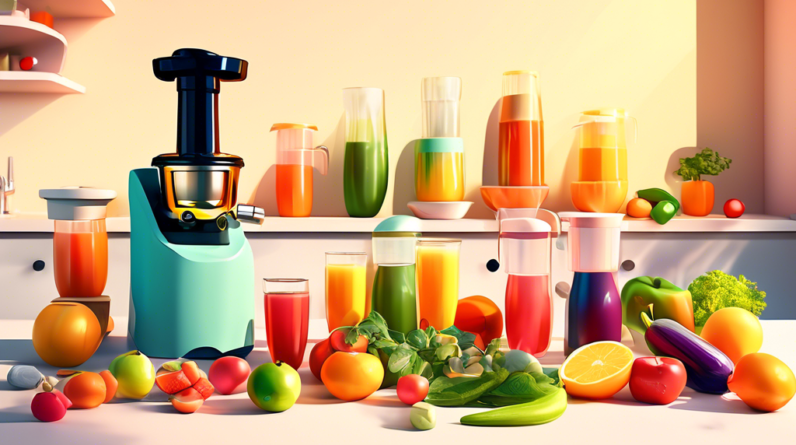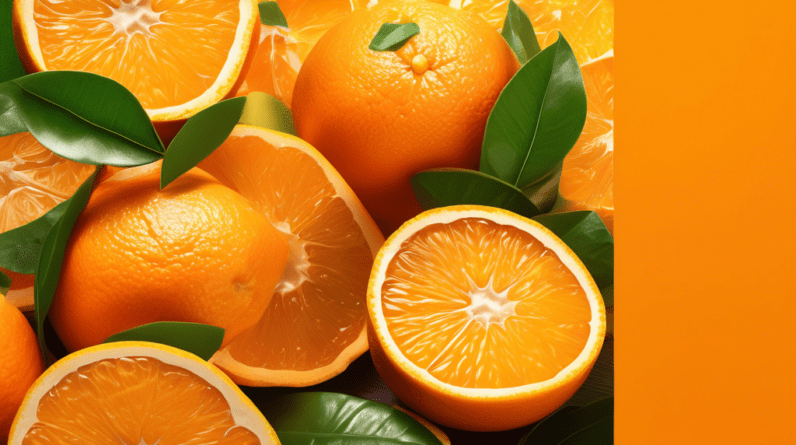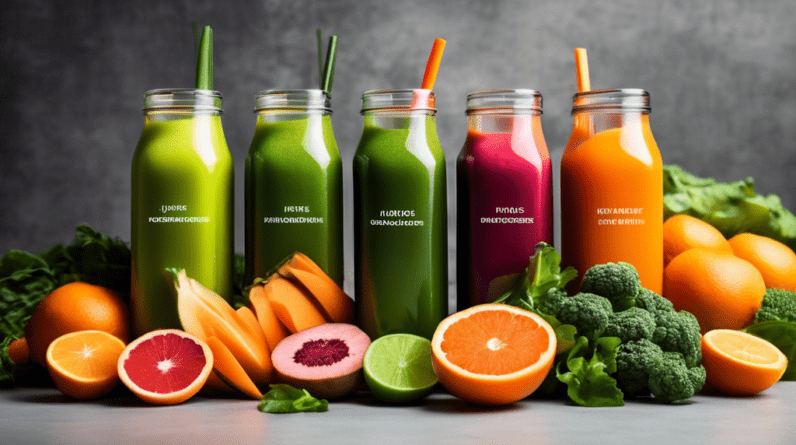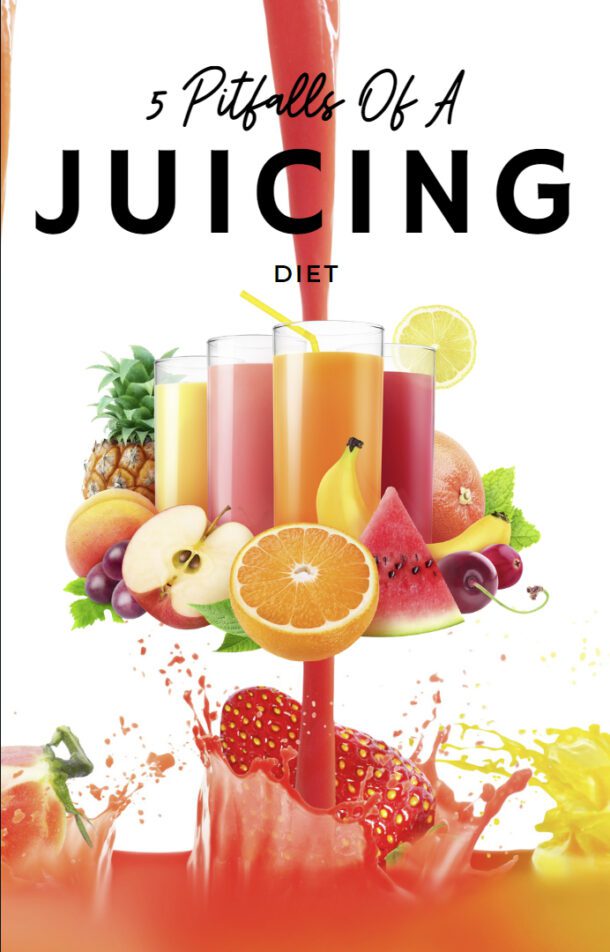
Introduction: Unleash the Power of Fresh Juice
In a world increasingly focused on health and wellness, juicing has
emerged as a popular trend, offering a delicious and convenient way to
flood your body with essential nutrients. But with countless juicers
flooding the market, choosing the right one can feel overwhelming. This
comprehensive guide will equip you with everything you need to know before
buying and sipping your way to a healthier you.
Why Juice? Unlocking the Benefits
Juicing isn’t just a fad; it offers a myriad of health benefits. By
extracting nutrient-rich juice from fruits and vegetables, you can:
-
Boost nutrient intake: Juicing makes consuming a wider
variety of fruits and vegetables easier, providing your body with
concentrated vitamins, minerals, and antioxidants. -
Improve digestion: Juices are easier to digest than whole
produce, giving your digestive system a break while still delivering
essential nutrients. -
Enhance energy levels: Natural sugars in fruit juices provide
a quick energy boost, while the vitamins and minerals support overall
cellular function. -
Support weight management: Low-calorie, nutrient-rich
juices can aid in weight loss by promoting satiety and reducing overall
calorie intake. -
Strengthen immunity: The abundance of antioxidants in fruits
and vegetables helps combat free radicals, bolstering your immune
system.
Types of Juicers: Finding Your Perfect Match
Navigating the world of juicers starts with understanding the different
types available, each with pros and cons:
1. Centrifugal Juicers
How they work: These juicers use a rapidly spinning blade to
shred produce, separating juice from pulp through centrifugal force.
Pros: Affordable, fast juicing, easy to clean, wide feeding chute
for larger pieces of produce.
Cons: Can generate heat, potentially oxidizing nutrients, not
ideal for leafy greens or wheatgrass, produces less juice yield compared
to other types.
2. Masticating Juicers
How they work: Also known as slow juicers or cold-press
juicers, these machines use a slow-turning auger to crush and press
produce, extracting maximum juice and nutrients.
Pros: Higher juice yield, preserves more nutrients due to less
heat generation, quieter operation, ideal for leafy greens and wheatgrass.
Cons: More expensive, slower juicing process, requires smaller
produce pieces, cleaning can be more time-consuming.
3. Triturating Juicers
How they work: These juicers utilize two gears to grind produce
into a fine pulp, extracting even more juice than masticating models.
Pros: Highest juice yield, excellent for leafy greens,
wheatgrass, and nuts, operates quietly.
Cons: Most expensive option, bulky and heavy, slower juicing
process.
4. Citrus Juicers
How they work: Specifically designed for juicing citrus fruits,
these models feature a reamer that extracts juice when pressed down.
Pros: Affordable, easy to use and clean, perfect for fresh
orange or grapefruit juice.
Cons: Limited to citrus fruits only.
Factors to Consider Before Buying: Making an Informed Choice
Once you’ve explored the different types of juicers, consider these
essential factors to find your perfect match:
1. Budget
Juicer prices vary significantly, so set a budget range before you start
shopping. Centrifugal juicers are the most budget-friendly, while
masticating and triturating models come at a higher price point.
2. Juicing Frequency
Consider how often you plan to juice. If you’re a daily juicer,
investing in a high-quality masticating or triturating juicer might be
worthwhile. For occasional use, a centrifugal juicer might suffice.
3. Ingredients
Think about the types of produce you’ll be juicing. If you love leafy
greens and wheatgrass, a masticating or triturating juicer is essential.
For mainly fruits and vegetables, a centrifugal juicer can handle the job.
4. Speed and Efficiency
Centrifugal juicers are the fastest, while masticating and triturating
models take longer. If you’re short on time, a centrifugal juicer might
be more convenient.
5. Noise Level
Masticating and triturating juicers operate much quieter than
centrifugal models. If noise is a concern, choose a slower-speed juicer.
6. Ease of Cleaning
Some juicers are easier to clean than others. Look for models with
dishwasher-safe parts or easy-to-disassemble components for hassle-free
cleaning.
7. Size and Storage
Juicers come in different sizes. Consider your countertop space and
storage options before making a purchase.
Juicing Tips for Beginners: Getting Started on Your Juicing Journey
Embarking on your juicing journey should be exciting and enjoyable.
Follow these tips for a smooth and rewarding experience:
-
Start with simple recipes: Begin with basic combinations
using fruits and vegetables you enjoy. -
Use organic produce whenever possible: This minimizes
pesticide exposure and ensures you’re getting the highest quality
juice. -
Wash and chop produce before juicing: This makes the juicing
process faster and more efficient. -
Don’t over-juice: Start with small quantities and gradually
increase as your body adjusts. -
Experiment with different flavor combinations: Get creative
and try new ingredients to discover your favorite juice blends. -
Listen to your body: Pay attention to how different juices
make you feel and adjust your recipes accordingly. -
Enjoy the process! Juicing should be an enjoyable and
rewarding experience, so relax, have fun, and savor the deliciousness
of fresh, homemade juice.
Conclusion: Raise a Glass to Your Health
Choosing the right juicer empowers you to embark on a journey of
enhanced health and well-being. By understanding the different types of
juicers, considering your individual needs, and following these helpful
tips, you’ll be well on your way to enjoying delicious, nutrient-packed
juices that invigorate your body and revitalize your life. So, invest in
a quality juicer, explore the world of juicing recipes, and raise a glass
to a healthier, happier you!






